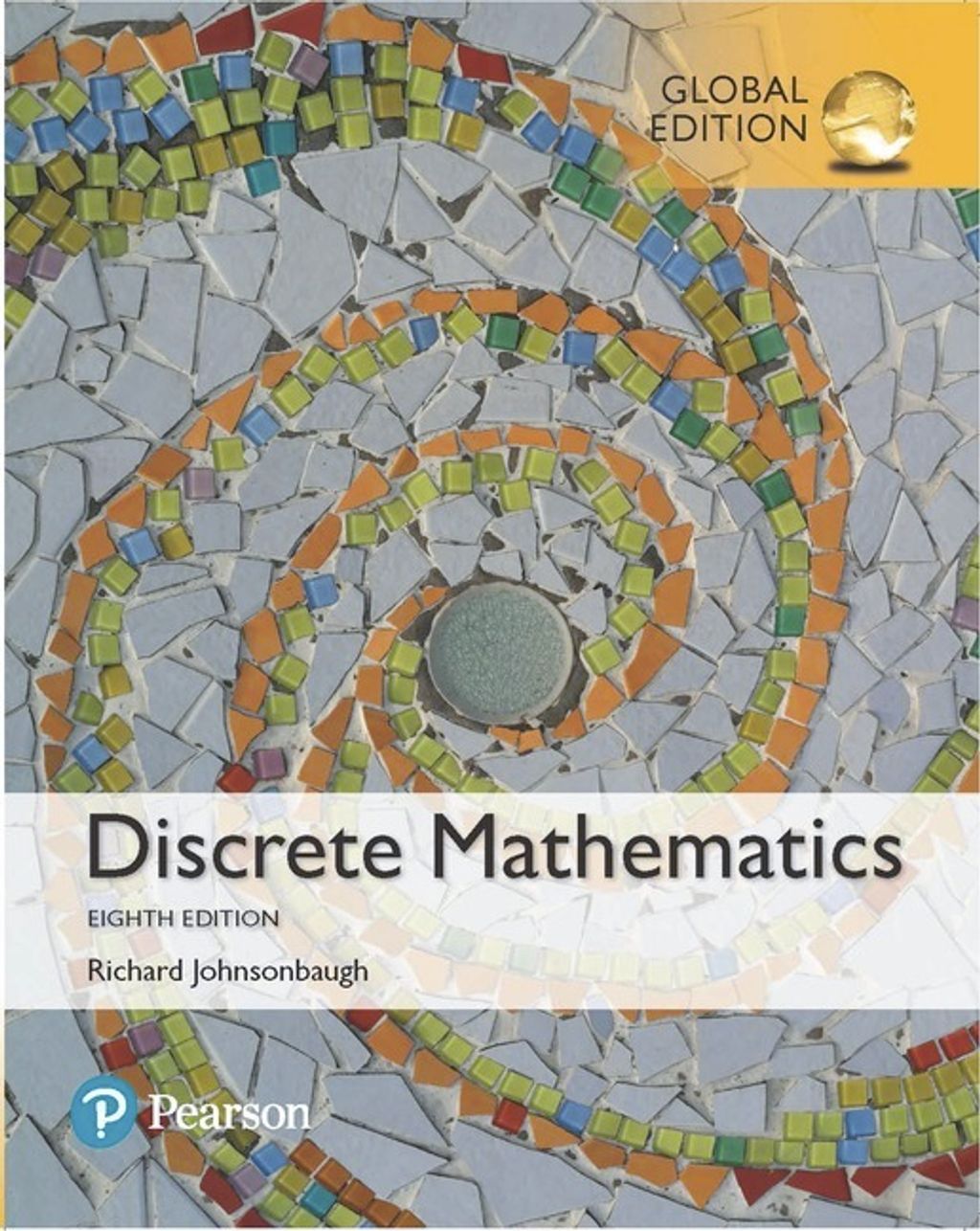Discrete Mathematics, Global Edition, 8th Edition
- Regular price
- RM 45.00
- Sale price
- RM 45.00
- Regular price
-
RM 45.00
Share
Richard Johnsonbaugh
For one- or two-term introductory courses in discrete mathematics.
Extend students’ mathematical maturity and ability to deal with abstraction
- Strong emphasis on reading and writing proofs — Illustrates most proofs of theorems with annotated figures to provide additional explanation and insight into the proofs.
- EXPANDED! More than 100 new exercises have been added to the first three chapters: Sets and Logic, Proofs, and Functions, Sequences, and Relations. There are now more than 1,750 worked examples and exercises in these chapters.
- Problem Solving Corners, a hallmark feature that helps students attack and solve problems and show them how to do proofs.
- Extensive discussion of algorithms, recursive algorithms, and the analysis of algorithms — The algorithms are written in a flexible form of pseudocode, which resembles currently popular languages such as C, C++, and Java.
- Extensive applications with an emphasis on computer science. Approximately 150 computer exercises are included throughout the book.
- Emphasis on the interplay among the various topics — For example, mathematical induction is closely tied to recursive algorithms; the Fibonacci sequence is used in the analysis of the Euclidean algorithm; many exercises throughout the book require mathematical induction; demonstrations of how to characterize the components of a graph by defining an equivalence relation on the set of vertices; and more.
- Figures and tables — Illustrate concepts, show how algorithms work, elucidate proofs, and motivate the material. Figure captions provide additional explanation and insight into figures accompanying proofs.
- Summaries of the mathematical and algorithmic notation used in the book on the inside covers.
Table of Contents
1. Sets and Logic
1.1 Sets
1.2 Propositions
1.3 Conditional Propositions and Logical Equivalence
1.4 Arguments and Rules of Inference
1.5 Quantifiers
1.6 Nested Quantifiers
Problem-Solving Corner: Quantifiers
2. Proofs
2.1 Mathematical Systems, Direct Proofs, and Counterexamples
2.2 More Methods of Proof
Problem-Solving Corner: Proving Some Properties of Real Numbers
2.3 Resolution Proofs
2.4 Mathematical Induction
Problem-Solving Corner: Mathematical Induction
2.5 Strong Form of Induction and the Well-Ordering Property
3. Functions, Sequences, and Relations
3.1 Functions
Problem-Solving Corner: Functions
3.2 Sequences and Strings
3.3 Relations
3.4 Equivalence Relations
Problem-Solving Corner: Equivalence Relations
3.5 Matrices of Relations
3.6 Relational Databases
4. Algorithms
4.1 Introduction
4.2 Examples of Algorithms
4.3 Analysis of Algorithms
Problem-Solving Corner: Design and Analysis of an Algorithm
4.4 Recursive Algorithms
5. Introduction to Number Theory
5.1 Divisors
5.2 Representations of Integers and Integer Algorithms
5.3 The Euclidean Algorithm
Problem-Solving Corner: Making Postage
5.4 The RSA Public-Key Cryptosystem
6. Counting Methods and the Pigeonhole Principle
6.1 Basic Principles
Problem-Solving Corner: Counting
6.2 Permutations and Combinations
Problem-Solving Corner: Combinations
6.3 Generalized Permutations and Combinations
6.4 Algorithms for Generating Permutations and Combinations
6.5 Introduction to Discrete Probability
6.6 Discrete Probability Theory
6.7 Binomial Coefficients and Combinatorial Identities
6.8 The Pigeonhole Principle
7. Recurrence Relations
7.1 Introduction
7.2 Solving Recurrence Relations
Problem-Solving Corner: Recurrence Relations
7.3 Applications to the Analysis of Algorithms
8. Graph Theory
8.1 Introduction
8.2 Paths and Cycles
Problem-Solving Corner: Graphs
8.3 Hamiltonian Cycles and the Traveling Salesperson Problem
8.4 A Shortest-Path Algorithm
8.5 Representations of Graphs
8.6 Isomorphisms of Graphs
8.7 Planar Graphs
8.8 Instant Insanity
9. Trees
9.1 Introduction
9.2 Terminology and Characterizations of Trees
Problem-Solving Corner: Trees
9.3 Spanning Trees
9.4 Minimal Spanning Trees
9.5 Binary Trees
9.6 Tree Traversals
9.7 Decision Trees and the Minimum Time for Sorting
9.8 Isomorphisms of Trees
9.9 Game Trees
10. Network Models
10.1 Introduction
10.2 A Maximal Flow Algorithm
10.3 The Max Flow, Min Cut Theorem
10.4 Matching
Problem-Solving Corner: Matching
11. Boolean Algebras and Combinatorial Circuits
11.1 Combinatorial Circuits
11.2 Properties of Combinatorial Circuits
11.3 Boolean Algebras
Problem-Solving Corner: Boolean Algebras
11.4 Boolean Functions and Synthesis of Circuits
11.5 Applications
12. Automata, Grammars, and Languages
12.1 Sequential Circuits and Finite-State Machines
12.2 Finite-State Automata
12.3 Languages and Grammars
12.4 Nondeterministic Finite-State Automata
12.5 Relationships Between Languages and Automata
13. Computational Geometry
13.1 The Closest-Pair Problem
13.2 An Algorithm to Compute the Convex Hull
Appendix
A. Matrices B. Algebra Review C. Pseudocode
References
Hints and Solutions to Selected Exercises
Index





